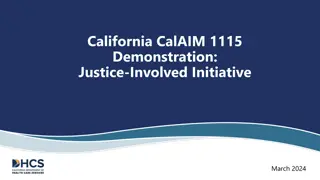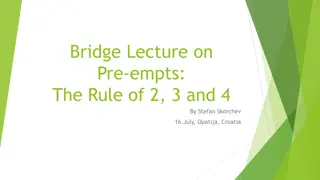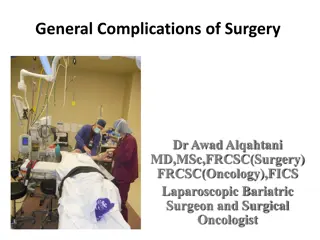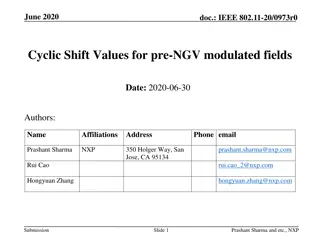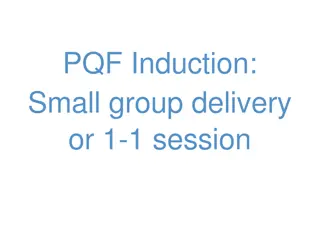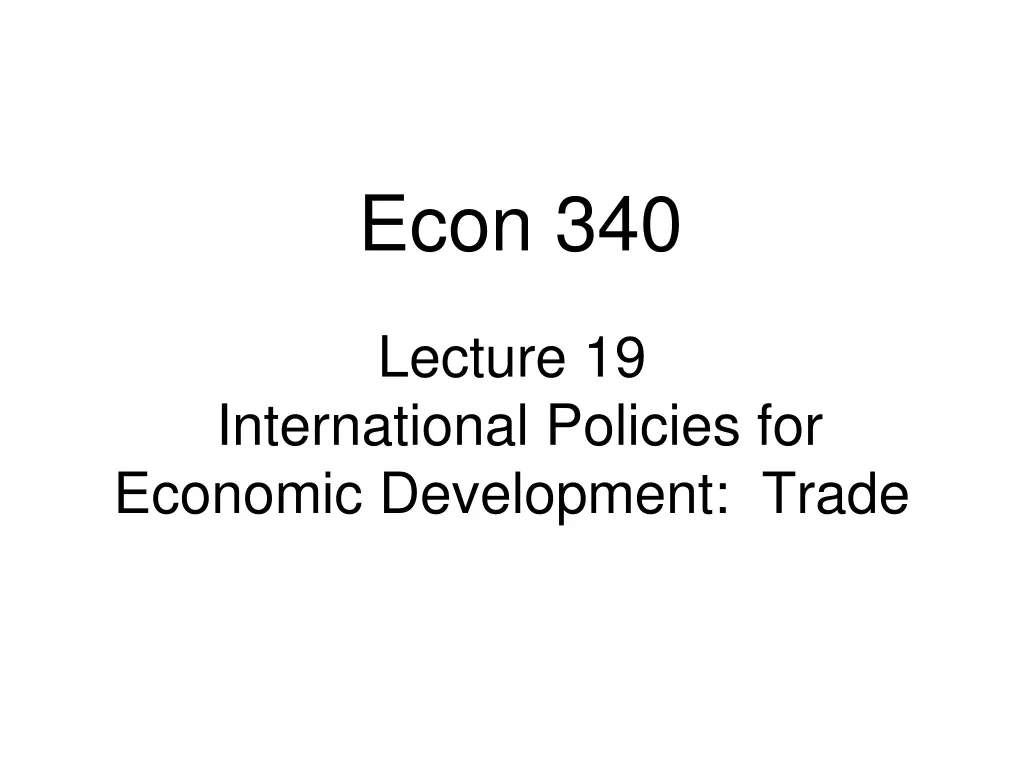
Understanding International Policies for Economic Development: Trade Issues
Explore the main issues of development, the Washington Consensus, and special problems faced by developing countries in the context of international trade policies. Learn about the pros and cons of tariffs and subsidies, as well as policy recommendations for economic development.
Download Presentation

Please find below an Image/Link to download the presentation.
The content on the website is provided AS IS for your information and personal use only. It may not be sold, licensed, or shared on other websites without obtaining consent from the author. If you encounter any issues during the download, it is possible that the publisher has removed the file from their server.
You are allowed to download the files provided on this website for personal or commercial use, subject to the condition that they are used lawfully. All files are the property of their respective owners.
The content on the website is provided AS IS for your information and personal use only. It may not be sold, licensed, or shared on other websites without obtaining consent from the author.
E N D
Presentation Transcript
Econ 340 Lecture 19 International Policies for Economic Development: Trade
Outline: International Policies for Economic Development: Trade The Main Issues of Development The Washington Consensus Special Problems of Developing Countries Pros and Cons of Tariffs Used by Developing Countries The Infant Industry Argument Primary-Product Specialization Growth and Exports / Import Substitution Pros and Cons of Subsidies Used by Developed Countries Policy Recommendations Econ 340, Deardorff, Lecture 19: Development Trade 2
Outline: International Policies for Economic Development: Trade The Main Issues of Development The Washington Consensus Special Problems of Developing Countries Pros and Cons of Tariffs Used by Developing Countries The Infant Industry Argument Primary-Product Specialization Growth and Exports / Import Substitution Pros and Cons of Subsidies Used by Developed Countries Policy Recommendations Econ 340, Deardorff, Lecture 19: Development Trade 3
The Issues The Two Main Issues: Should developing countries be open to international trade? Should developing countries be open to international capital movements? (both financial and FDI) Answers are not easy and obvious Even though the standard advice of IMF, World Bank and most economists today is: YES to both Econ 340, Deardorff, Lecture 19: Development Trade 4
Outline: International Policies for Economic Development: Trade The Main Issues of Development The Washington Consensus Special Problems of Developing Countries Pros and Cons of Tariffs Used by Developing Countries The Infant Industry Argument Primary-Product Specialization Growth and Exports / Import Substitution Pros and Cons of Subsidies Used by Developed Countries Policy Recommendations Econ 340, Deardorff, Lecture 19: Development Trade 5
The Washington Consensus This is a list of policies and institutions that were said to be pushed upon developing countries by The IMF The World Bank United States agencies that deal with developing countries USAID (US Agency for International Development) US Treasury Department The name Washington Consensus was coined by economist John Williamson in 1989 He intended it to refer to the lowest common denominator of policy advice being addressed by the Washington-based institutions to Latin American countries as of 1989. Econ 340, Deardorff, Lecture 19: Development Trade 6
The Washington Consensus: The Policies 1. Fiscal Discipline Don t spend too much 2. Public Expenditure Priorities Spend intelligently 3. Tax Reform Lower marginal tax rates and broaden tax base 4. Financial Liberalization Allow financial markets to function competitively 5. Exchange Rates Have a competitive (not overvalued) exchange rate Econ 340, Deardorff, Lecture 19: Development Trade 7
The Washington Consensus: The Policies 6. Trade Liberalization Reduce tariffs and NTBs 7. Foreign Direct Investment Let it in 8. Privatization Turn state-owned enterprises into private firms 9. Deregulation Remove unnecessary regulation of industries 10. Property Rights Define and enforce clear property rights Econ 340, Deardorff, Lecture 19: Development Trade 8
Outline: International Policies for Economic Development: Trade The Main Issues of Development The Washington Consensus Special Problems of Developing Countries Pros and Cons of Tariffs Used by Developing Countries The Infant Industry Argument Primary-Product Specialization Growth and Exports / Import Substitution Pros and Cons of Subsidies Used by Developed Countries Policy Recommendations Econ 340, Deardorff, Lecture 19: Development Trade 9
Special Problems of Developing Countries First, what to call developing countries LDCs used to be = Less Developed Countries LDCs now also = Least Developed Countries Poorest of the poor On a list of 47 at the United Nations (as of November 2018) Developing Countries (a more optimistic name) LICs = Low Income Countries (vs. MICs, HICs = Middle, High Income Countries) Third World (slightly obsolete) (Used to be called backward countries) Econ 340, Deardorff, Lecture 19: Development Trade 10
Special Problems of Developing Countries The defining and most basic problem of developing countries: Low per capita income (low GDP per person) Compared to US in 1990 (the data I happen to have) real per capita incomes were only 7% in China, India, Pakistan, Bangladesh Even less in much of Africa Less than 15% in Brazil, Turkey, Thailand, etc There were hardly any countries in the middle, between the poorest and Europe/US Econ 340, Deardorff, Lecture 19: Development Trade 11
China (1134) + India (850) Chart 4: 1990 Population Distribution of Per Capita National Income Excluding China and India 350 Pakistan (112) Bangladesh (108) Indonesia (178) 300 1990 Population, Millions US (250) 250 France (57) Iran (56) Thailand (56) Nigeria (96) Japan (124) W. Germany (63) 200 Turkey (56) Brazil (149) 150 Mexico (82) UK (57) 100 Philippines (61) Italy (58) 50 0 2-Percentiles of 1990 Per Capita National Income Econ 340, Deardorff, Lecture 19: Development Trade 12
Data from Gapminder.org Econ 340, Deardorff, Lecture 19: Development Trade 13
Data from Gapminder.org Econ 340, Deardorff, Lecture 19: Development Trade 14
Special Problems of Developing Countries Developing countries tend not to have Physical Capital Technology Human Capital Infrastructure Markets (especially markets for capital) Econ 340, Deardorff, Lecture 19: Development Trade 15
Special Problems of Developing Countries Developing countries also tend not to have Economic Freedoms Rule of law (property, contracts) Sound money Open markets Transparent & accountable government regulations Econ 340, Deardorff, Lecture 19: Development Trade 16
Special Problems of Developing Countries Developing countries do not have enough Intangible Capital (See Bailey) Combines human capital and value of institutions Components: trust among people in a society efficient judicial system clear property rights effective government Contributions to explaining intangible capital: Rule of law 57% Education 36% Econ 340, Deardorff, Lecture 19: Development Trade 17
Special Problems of Developing Countries Developing countries do tend to have Overpopulation Poor health and sanitation Corruption Econ 340, Deardorff, Lecture 19: Development Trade 18
Outline: International Policies for Economic Development: Trade The Main Issues of Development The Washington Consensus Special Problems of Developing Countries Pros and Cons of Tariffs Used by Developing Countries The Infant Industry Argument Primary-Product Specialization Growth and Exports / Import Substitution Pros and Cons of Subsidies Used by Developed Countries Policy Recommendations Econ 340, Deardorff, Lecture 19: Development Trade 19
Pros and Cons of Tariffs Used by Developing countries Con: Same advantages of free trade as for developed countries Efficiency gains from exploiting comparative advantage Improved competition, variety, scale economies, productivity Trade may promote growth through exports Pro: Developing countries are behind and therefore can t compete Econ 340, Deardorff, Lecture 19: Development Trade 20
Outline: International Policies for Economic Development: Trade The Main Issues of Development The Washington Consensus Special Problems of Developing Countries Pros and Cons of Tariffs Used by Developing Countries The Infant Industry Argument Primary-Product Specialization Growth and Exports / Import Substitution Pros and Cons of Subsidies Used by Developed Countries Policy Recommendations Econ 340, Deardorff, Lecture 19: Development Trade 21
Infant Industry Argument The argument Developing country firms lack experience, thus are not productive, therefore cannot survive in world markets So they need protection in order to give them time gain experience and to learn to become more productive and competitive Econ 340, Deardorff, Lecture 19: Development Trade 22
Infant Industry Argument Is it valid? Yes, when there really is learning by doing AND if capital markets are imperfect Otherwise firms could borrow to cover their losses while they become competitive (just as firms in developed countries routinely do) OR if the learning accrues to workers who then Leave their firms And become competitors Econ 340, Deardorff, Lecture 19: Development Trade 23
Infant Industry Argument Problems (even if these conditions are met) Protection should be temporary But that s very hard to do Protected industries don t willingly give it up Protection is second best It would be more efficient (and thus better for country) to use a more direct policy instead of a tariff: Subsidize production Subsidize loans Econ 340, Deardorff, Lecture 19: Development Trade 24
Infant Industry Argument Domestic Market in LDC Example Suppose that costs are so high that, at world price PW, country does not produce at all. So with free trade, Q=0. But that by sustaining production at Q0 for 3 years P S0 PW D Q0 Q Econ 340, Deardorff, Lecture 19: Development Trade 25
Infant Industry Argument Domestic Market in LDC Example by sustaining production at Q0 for 3 years, Costs will fall from S0 to S1 for 30 years P S0 S1 PW D Q0 Q Econ 340, Deardorff, Lecture 19: Development Trade 26
Infant Industry Argument Domestic Market in LDC Example By raising price to P1 using a tariff t for 3 years Output is Q0 for 3 years and then, because S shifts down, output is Q1 for 30 years P S0 P1 S1 t PW D Q0 Q1 Q Econ 340, Deardorff, Lecture 19: Development Trade 27
Infant Industry Argument Domestic Market in LDC Example Cost: Usual Dead Weight Loss from tariff for 3 years Benefit: Producer surplus for 30 years Combination of these may be positive P S0 P1 S1 t PW D Q0 Q1 Q Econ 340, Deardorff, Lecture 19: Development Trade 28
Infant Industry Argument Domestic Market in LDC Example But subsidy s=t achieves same result without raising price to demanders Thus cost is smaller but benefit is the same P S0 P1 S1 s PW D Q0 Q1 Q Econ 340, Deardorff, Lecture 19: Development Trade 29
Outline: International Policies for Economic Development: Trade The Main Issues of Development The Washington Consensus Special Problems of Developing Countries Pros and Cons of Tariffs Used by Developing Countries The Infant Industry Argument Primary-Product Specialization Growth and Exports / Import Substitution Pros and Cons of Subsidies Used by Developed Countries Policy Recommendations Econ 340, Deardorff, Lecture 19: Development Trade 30
Other Objections to Free Trade in Developing Countries Countries are forced by trade (comparative advantage) to specialize in Primary Products These are (it is argued) Low-tech (thus no future) Competitive (thus no profit) Subject to competition from synthetic substitutes Of low demand elasticity Unclear what this means, but presumably income elasticity So that demand rises little as world income rises Claimed implication: demand rises less rapidly than demand for manufactures Econ 340, Deardorff, Lecture 19: Development Trade 31
Other Objections to Free Trade in Developing Countries Countries are forced by trade to specialize in Primary Products Supposed conclusion: Declining Terms of Trade This has sometimes been true, but not always Primary product prices rose in middle 2008 Prices have fallen since then Overall, it does look like primary product prices do tend to fall over time Econ 340, Deardorff, Lecture 19: Development Trade 32
Econ 340, Deardorff, Lecture 19: Development Trade 33
World Commodity Prices, 1960-2000 (Index, 1960=100, 3-year moving averages) Econ 340, Deardorff, Lecture 19: Development Trade 34 Source: World Bank, World Development Indicators, 2001
Petroleum and Non-energy Commodity Prices,1960- 2007 (Index, 1960=100) Source: World Bank, World Development Indicators, 2001; IMF commodity prices Econ 340, Deardorff, Lecture 19: Development Trade 35
Petroleum and Non-energy Commodity Prices,1960- 2007 (Index, 1960=100) Source: World Bank, World Development Indicators, 2001; IMF commodity prices Econ 340, Deardorff, Lecture 19: Development Trade 36
Outline: International Policies for Economic Development: Trade The Main Issues of Development The Washington Consensus Special Problems of Developing Countries Pros and Cons of Tariffs Used by Developing Countries The Infant Industry Argument Primary-Product Specialization Growth and Exports / Import Substitution Pros and Cons of Subsidies Used by Developed Countries Policy Recommendations Econ 340, Deardorff, Lecture 19: Development Trade 37
Exports and Growth How exports may help growth Economies of scale: Produce for world market to achieve higher scale Stimulate adoption of international best- practice technologies Not necessary for firms protected by tariff Finance imports of higher-tech capital goods Encourage inward FDI to produce for export bringing capital and technology Econ 340, Deardorff, Lecture 19: Development Trade 38
Track Record of Import Substitution In 1950s, two opposing strategies were perceived: Import Substitution : Use tariffs and NTBs to protect industries, substituting for imports Export Promotion : Free trade and other policies to encourage exports Most developing countries, and their economist advisors, favored Import Substitution Econ 340, Deardorff, Lecture 19: Development Trade 39
Track Record of Import Substitution Early examples of Import Substitution That did well United States in 19th century Japan after World War II That did poorly India South America Econ 340, Deardorff, Lecture 19: Development Trade 40
Track Record of Import Substitution Examples of Export Promotion The Four Tigers all did well Hong Kong South Korea Taiwan Singapore Later examples did well until crisis of 1997: Thailand Indonesia Philippines And most recovered rapidly after 1997. Econ 340, Deardorff, Lecture 19: Development Trade 41
Outline: International Policies for Economic Development: Trade The Main Issues of Development The Washington Consensus Special Problems of Developing Countries Pros and Cons of Tariffs Used by Developing Countries The Infant Industry Argument Primary-Product Specialization Growth and Exports / Import Substitution Pros and Cons of Subsidies Used by Developed Countries Policy Recommendations Econ 340, Deardorff, Lecture 19: Development Trade 42
Pros and Cons of Subsidies Used by Developed Countries Many developed countries subsidize agriculture Economists agree that this usually hurts them more than it benefits their own farmers But the issue here: How does it affect developing countries? Examples US and EU Cotton, Sugar Econ 340, Deardorff, Lecture 19: Development Trade 43
Pros and Cons of Subsidies Used by Developed Countries Foreign Effects of Subsidies: Recall from Lecture 6 on Nontariff Barriers Export subsidies Push down world prices, and thus Help foreign consumers Hurt foreign competing producers Help other countries that are net importers Hurt other countries that are net exporters Production subsidies have the same effects abroad as export subsidies Econ 340, Deardorff, Lecture 19: Development Trade 44
Pros and Cons of Subsidies Used by Developed Countries Cotton Subsidies Countries whose exports were more than 50% cotton in 2001 (& GDP/capita 2005): Benin ($1100) Burkina Faso ($1200) Chad ($1400) Mali ($1200) Togo ($1600) Econ 340, Deardorff, Lecture 19: Development Trade 45
Pros and Cons of Subsidies Used by Developed Countries Cotton Subsidies (See FAO) Costs of production in West Africa are among the lowest in the world Costs in US are 3 times higher than Africa US cotton farmers get about $4 billion a year in subsidies From 1998 to 2001, US cotton production grew 40% US cotton exports doubled World cotton prices fell to record lows Econ 340, Deardorff, Lecture 19: Development Trade 46
Pros and Cons of Subsidies Used by Developed Countries Africa opposes US and EU farm subsidies Cotton is just one example Rich-country subsidies in many products hurt poor farmers throughout Africa It was African countries, especially cotton exporters, who derailed the Doha Round negotiations in Cancun Econ 340, Deardorff, Lecture 19: Development Trade 47
Pros and Cons of Subsidies Used by Developed Countries But it s not that simple: Consumers benefit from subsidies Many developing countries are primarily consumers, not producers, of many subsidized agricultural products The poor in these countries will be hurt if subsidies are removed (See Baker) Econ 340, Deardorff, Lecture 19: Development Trade 48
Outline: International Policies for Economic Development: Trade The Main Issues of Development The Washington Consensus Special Problems of Developing Countries Pros and Cons of Tariffs Used by Developing Countries The Infant Industry Argument Primary-Product Specialization Growth and Exports / Import Substitution Pros and Cons of Subsidies Used by Developed Countries Policy Recommendations Econ 340, Deardorff, Lecture 19: Development Trade 49
Policy Recommendations to Assist Developing Countries Developed countries: Remove tariffs on developing country exports See Copenhagen Consensus Completing the Doha Round would have done this and more High on their list of policies because costs are political, not economic But some say gain is small (See Baker) Econ 340, Deardorff, Lecture 19: Development Trade 50





